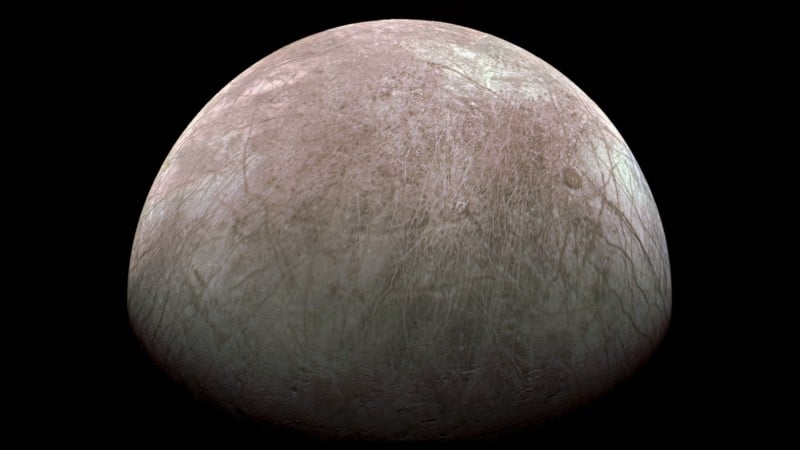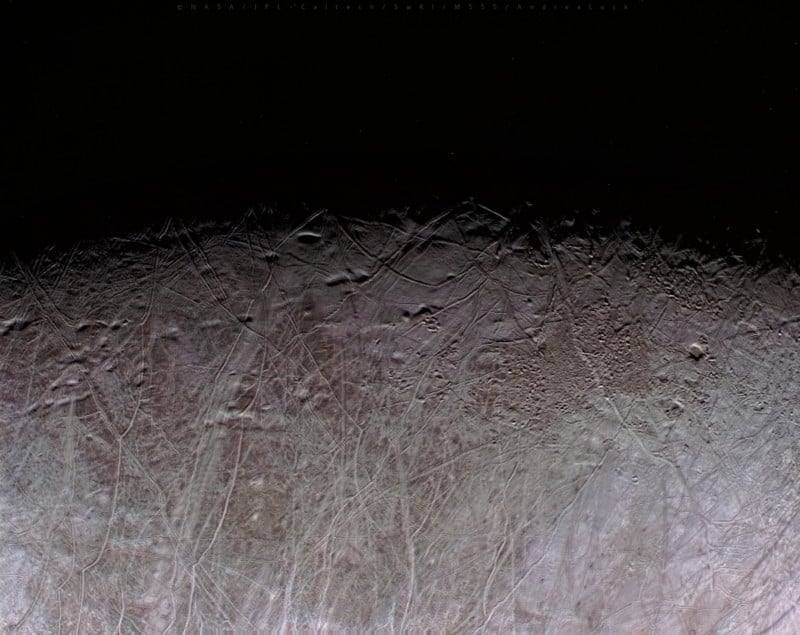
Andrea Luck, known in astronomy for his unique image processing of planetary images, has released several newly edited, highly-detailed images of Europa.
When NASA’s Juno probe sped past Jupiter’s icy moon Europa on September 29 it captured amazing images while probing the crust of the water-ice moon. Scientists hope that Europa will harbor life or provide information to help search for life elsewhere in the galaxy.
The first images released from this flyby were published last month and are some of the best images of Jupiter’s icy moon that have been seen in decades.
While perhaps less colorful than the original NASA images released back then, Luck’s renderings are much more detailed and show the scratches and pits in Europa’s dirty, icy surface.
Planetary imaging is made from numerous sensors, allowing for different renderings depending on the mix of data being used.

NASA will expand the exploration of Jupiter with a mission called the Europa Clipper, which will launch in October 2024 and will place a spacecraft in orbit around the icy moon. The craft will contain instrumentation better designed to peer below the frozen crust.
NASA deployed the Juno mission to study the surface of Jupiter, and the probe reached the gas giant in 2016. The second spacecraft to study Jupiter (the first being the Galleilo) was designed to study Jupiter, but the mission was extended, allowing scientists to get a sneak peek of what the Europa Clipper mission may reveal.
On his Flickr page, Luck provides processing renditions of many of NASA’s research missions, including Jupiter’s Great Red Spot, several passes of Mars, and more.
NASA’s images are part of the public domain and Luck provides his processed images free for download via Creative Commons.
The Juno spacecraft will eventually be de-orbited into Jupiter’s atmosphere, replaced by the Europa Clipper. That planned mission will have the craft pass over every section of Europa, with some passes as low as 25 kilometers from the surface. The Europa Clipper will be comprised of nine imaging and data-collection tools and is expected to provide detailed information about the composition of Europa and the chances of life below the surface.
Image credits: All images processed by Andrea Luck, used under Creative Commons 3.0